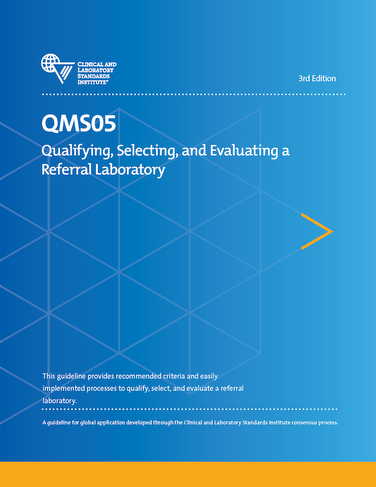You'll receive the latest updates on new standards, guidelines, and educational resources, as well as expert insights to help enhance your laboratory's performance and compliance.
Selecting a Referral Laboratory

There are many factors to consider when a lab identifies the need for referral laboratory services, which can make the process seem overwhelming. Identifying appropriate qualification criteria and establishing a selection process are the foundational elements for choosing a referral laboratory.
The first step in the selection of a referral laboratory is identifying the referring lab’s expectations for service. Answering the following questions is helpful:
- Does the laboratory need a referral laboratory that offers specialized examinations, such as a genetic examination for congenital defects?
- Does the laboratory need a referral laboratory that provides consultative services for anatomic pathology findings?
- Who are the stakeholders needed for decision-making?
- What examinations need to be performed by the referral laboratory and what is the expected examination volume?
The referring lab’s needs must also be determined before embarking on a referral laboratory search. For example, the referring laboratory could need a referral laboratory for one examination, a full-service laboratory with a broad examination menu, a laboratory with special expertise in a particular discipline or patient population such as pediatrics, or a laboratory that can provide consultative services, quick turnaround times, or test utilization management support.
Clinical and Laboratory Standards Institute guideline QMS05—Qualifying, Selecting, and Evaluating a Referral Laboratory provides laboratories with more information on a defined process to identify candidate referral laboratories and consultants and qualify them for additional consideration. Important criteria that the laboratory should consider when selecting a referral laboratory or consultant are also provided.